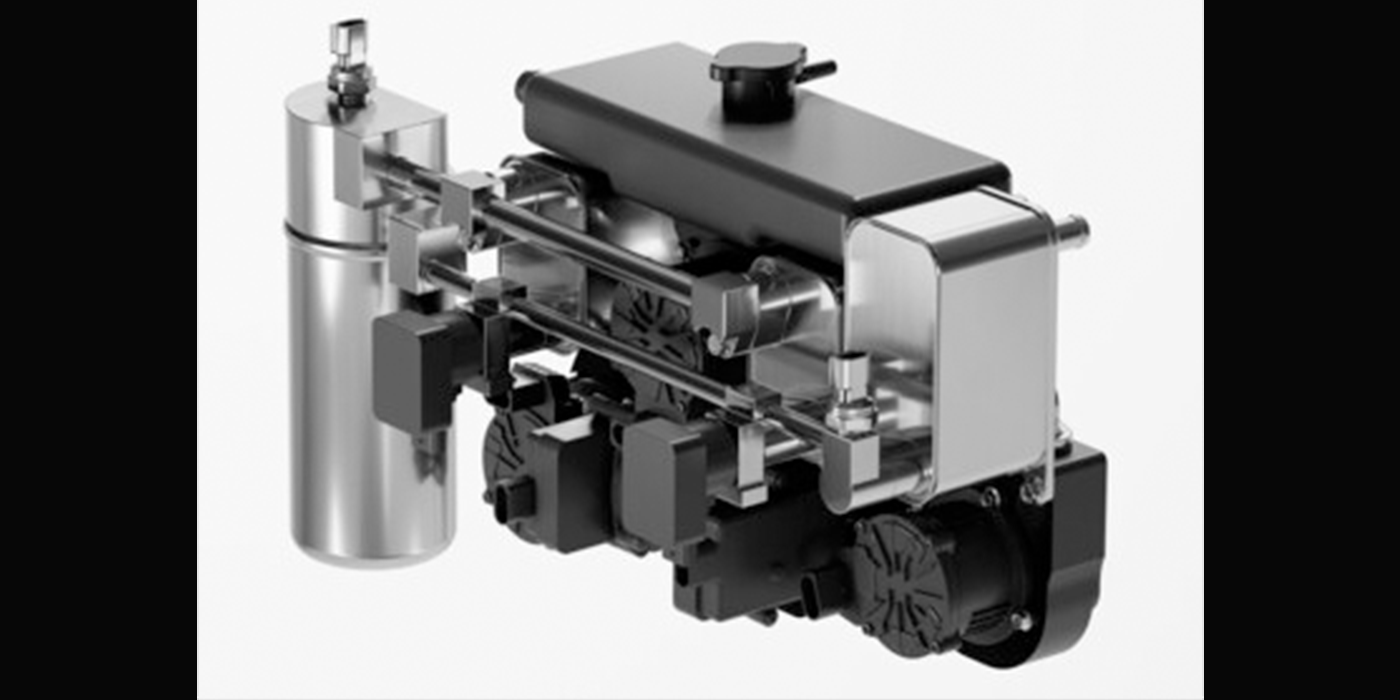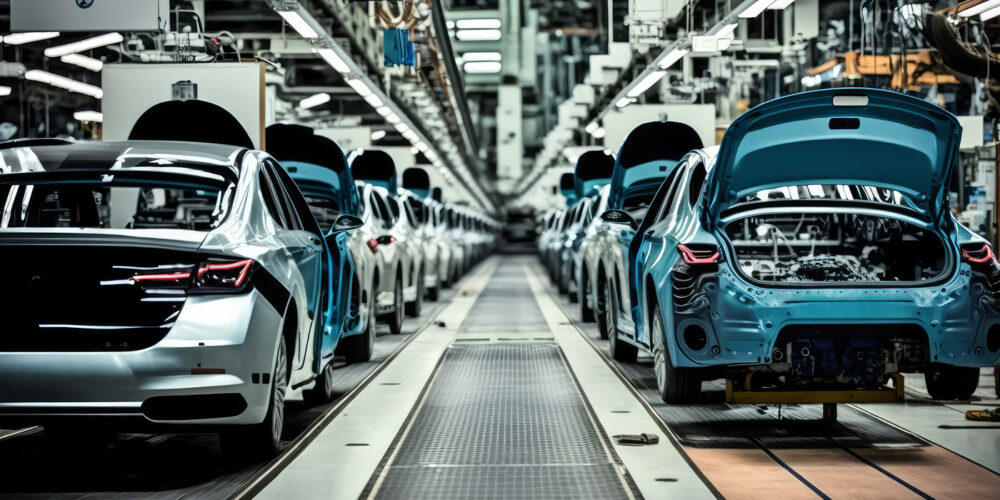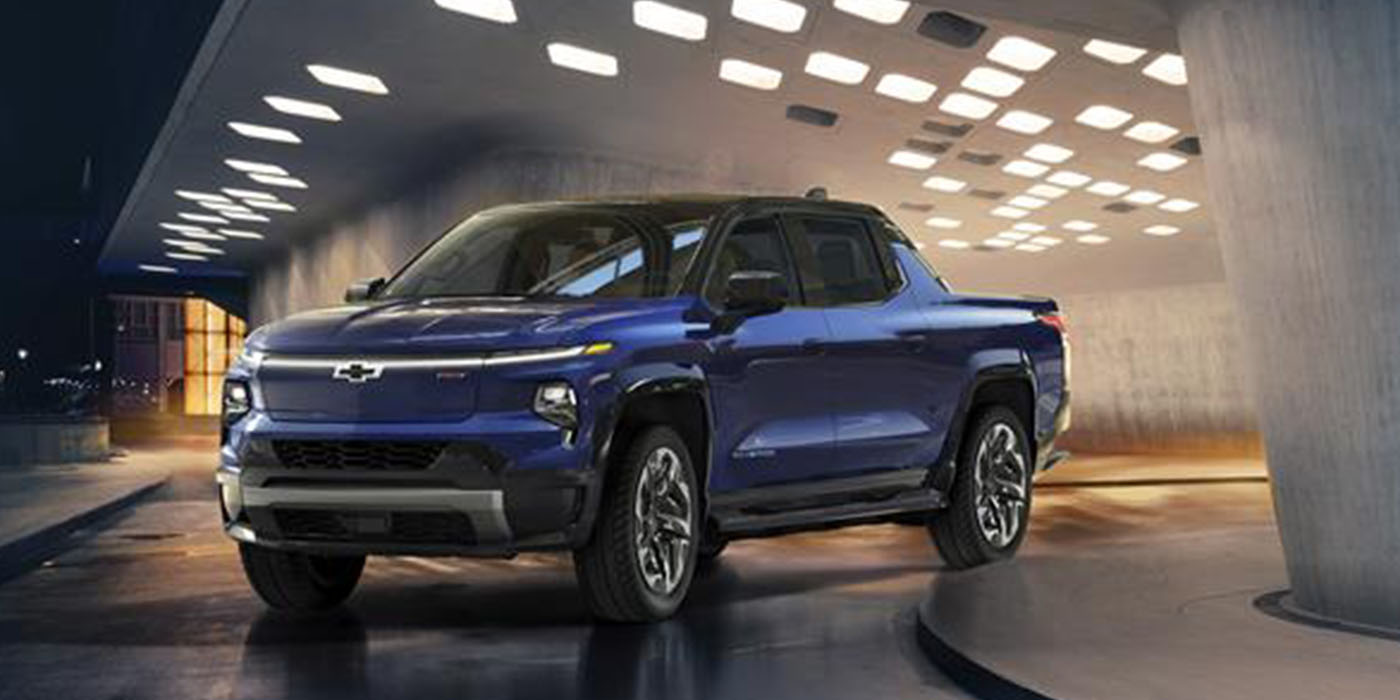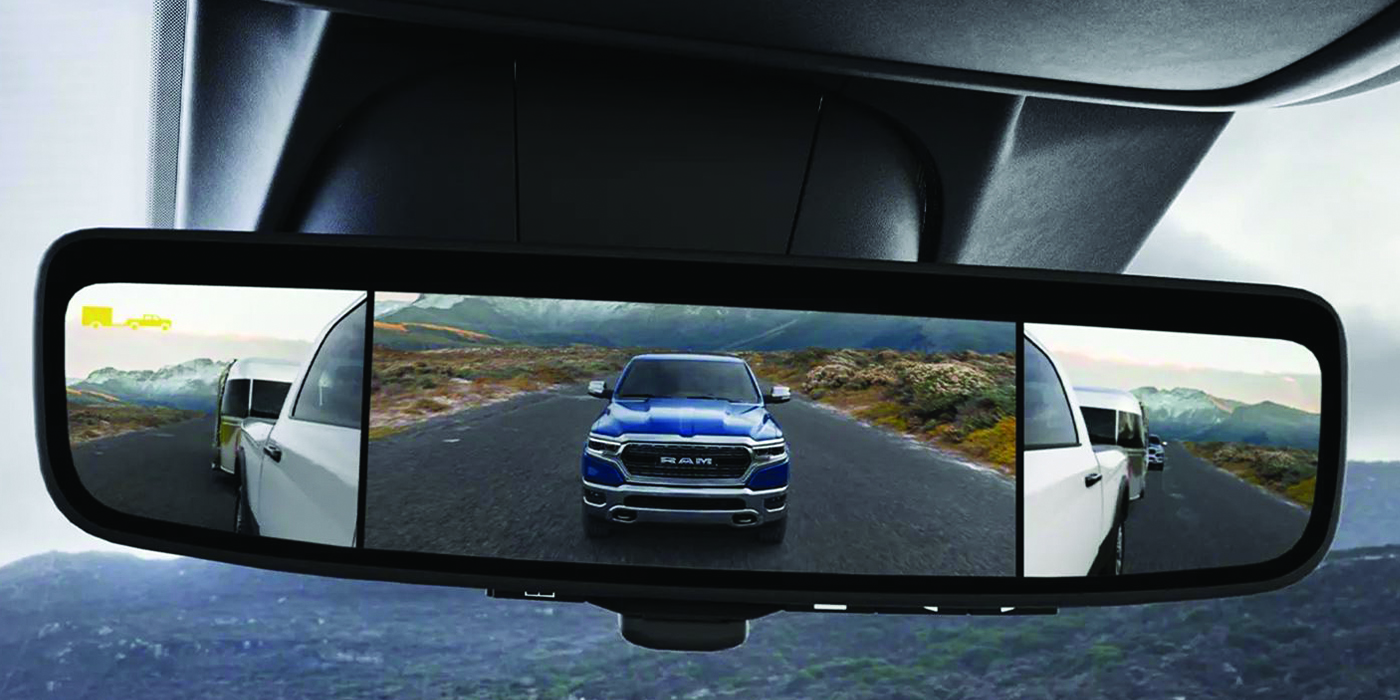WESTLAKE VILLAGE, Calif. — These days, for many folks, the business section is becoming the first part of the newspaper that they read as the nation struggles to right its economy. And few, if any, other single businesses have made more headlines or have had as dramatic an impact on the economy as the automotive industry. We’ve seen two of Detroit’s Big Three struggle through the bankruptcy process. Even the world’s largest automaker, Toyota, has become buried under billions of dollars in unanticipated losses, driven by the wholesale collapse of the U.S. automotive market.
Gary Dilts, senior vice president of global automotive operations for J.D. Power and Associates, provides an interesting perspective on the industry, having spent more than 30 years in the car business. Prior to joining J.D. Power in 2007, Dilts was the chief sales executive at Chrysler. With bankruptcies, reorganizations, job cuts, plant closings and Cash for Clunker deals all vying for our attention, Dilts provides some perspective on what is happening in the auto industry, and how it can recover.
Q: There’s plenty of news with two Detroit automakers emerging from bankruptcy. What are your thoughts about the situation?
A: These are two very different situations. General Motors has shed some brands and has come out of this with a completely different cost structure that can survive in a 10-million unit year. It has a relatively rich product pipeline, so I do see GM with a significant upside. Chrysler is a different story. It has virtually an empty product pipe. It has some quality problems. And it’s got a management void. So Chrysler is a bigger issue to fix. Hopefully, Fiat injects some product for Chrysler, especially the B and C segments (compact and mid-size cars).
Q: The government’s involvement in the auto industry has generated a lot of controversy — some folks are even threatening to boycott GM. The president has said he won’t have his administration involved in day-to-day operations. What do you foresee?
A: I think the two best days for General Motors (GM) are the day the government underwrote their debt and the day the government leaves. I was there on the steps of the National Press Club when then-Chrysler Chairman Lee Iacocca wrote a check to pay off the government loan guarantees. Getting the government out of our business put the speed back in the company and things moved forward fast from there. The big concern is what the consumer will do. Right now, General Motors is getting 20 percent of the market. It used to be 40 percent. There’s a vocal minority in the market who’ll tell you they’re going to boycott, but more intelligent members of the car-buying public recognize the situation and will be back in market. GM also has a huge car park and the opportunity to stay connected in the service lane. If they treat these customers right, they will get them back.
Q: We certainly have some bad examples of government involvement in the auto industry, in Britain, for example. But then again, we probably wouldn’t have the strong Japanese and Chinese auto industries without government assistance.
A: A lot of Toyota’s strength has come from its strong ties with the government. Bob Lutz made a point that the government involvement will be a good thing, because it will understand the auto industry, not just from Washington, but from the inside out. That’s good, not just for General Motors, but for the industry itself. You have some government officials who are starting to understand what CAFE requires in terms of redesigning powertrains, and all this will be hugely beneficial for the automakers and the supply chain. The balancing act is for the government to stay in and provide some funding for the short-term and some conceptual oversight, but stay out of the way in terms of product and day-to-day operations.
Q: How did the industry get into this much trouble? And how much was the result of outside forces, rather than bad decisions in Detroit?
A: To my way of thinking, what got the automotive industry into this was the launch of one vehicle at a time that was oversubscribed in terms of price and volume — the manufacturers were totally out of touch with the reality of the market. That’s how you wind up with a 17-million unit market with a million too many rental cars and a million too many leases dumped onto the market. I watched it inside at Chrysler, but it’s everyone, even Toyota, at this point. You launch your product based on some conservative targets for cost and volume, then you get cost overruns, you get some pressure in the market, and the next thing you know, you’re projecting more volume, and 100,000 units become 200,000 and you get over-capacity of 50 percent, and nowhere to hide.
I think that’s the big change we’re going to see, some reality — I mean stark reality — in the assessments on vehicle decisions.
When you sit at the table, the politics are tremendous to "go with the flow." And it’s that way, I don’t care if it’s Europe, Asia or the U.S. The whole process is wired to fail. You over-produce and over-price to try to out run the fixed costs.
Q: Speaking of launches, Fritz Henderson recently admitted that a majority of the launches they’ve had, in recent years, have been "just okay." At the best, they might have six out of 15 really good new products.
A: That means they’ll lose $7 billion to $10 billion. But that’s the way the industry has been operating. This sounds so simple you can’t believe this is the way the industry is operating, but it is.
Q: So, how difficult will it be for the industry, GM in particular, to start setting and then hitting more accurate projections?
A: The politics inside are perfectly designed to fail. If they don’t start getting some independent, outside input nothing will change. It’s too political. You have senior managers telling you what they see for their baby. Who’s going to risk standing up and arguing with that? I do think General Motors may set a new standard using someone outside to check in on these plans before they lock down these big investments. The culture does seem to be changing.
Q: How do you change the process to get better decisions? How do you set things up so people stand up to a top executive?
A: If the boss says the new model is going to sell 500,000 units, who is going to stand in his way? An executive like him drives the decision. Who sits at the table and notes there are going to be 10 new competitors and maybe the volume targets are out of reach or worse yet … changing? I think the government will look at the billion-dollar investments with a different eye. They are going to want to see projections and measured results.
Q: We’ve heard from various Detroit automakers that some of their latest products do quite well in consumer clinics — at least when they’re shown without brand badges. As soon as the same models are seen with a Detroit nameplate, they don’t do nearly as well. Why is that happening, and how do the Big Three rebuild their public image?
A: If you take a Camry and put a domestic badge on it, it wouldn’t be valued as much in those clinics. Put the Camry badge back on it and it’s worth $5,000 more to consumers. That’s just going to take time to work through. The clinics are always interesting but a bit suspect, when you pay people $50 to sit around for four hours and tell you what they think. The automakers are getting smarter. They’re doing more digital research work with communities and getting better feedback. But there’s no doubt this brand issue is hugely important and will challenge GM and Chrysler as they work their way back in the industry.
Q: The data I’ve seen suggest there’s a huge part of the population — especially in the most affluent and influential markets, like California — that simply doesn’t put domestic automakers on their shopping list. How do they change this?
A: One vehicle at a time. They have to build a vehicle that is bulletproof and delivers world-class mpg in the process. If you want to look at an automaker that’s doing it right, long-term, it’s Honda. Its launches have been almost perfect, protecting value, protecting image, so, as a consumer, all that is why people keep buying Honda. It’s not just cars. It’s the whole process that goes way beyond just making a good vehicle.
Q: Hyundai seems to be a good example of turning things around. It used to be the brand people didn’t take seriously, yet they recently won the North American Car of the Year honors with the new Genesis sedan. The Genesis is also the most appealing mid-size premium car, and the Elantra is the highest ranking compact car in initial quality, according to J.D. Power. What are they doing right and how might that apply to Detroit?
A: Hyundai’s a great example. Its quality has improved rapidly. It’s a predator on the move and a good example of what a company can do when it gets aligned. It has a mandate from the chairman’s office that runs to the shop floor to fix the quality and bring vehicles in at competitive prices. Hyundai is a real contender in the U.S. market.
Q: So, if you had to tell the Detroit automakers, these are the keys to your turnaround, what would those be?
A: The answer is to build to the market. Take a look at how Mercedes-Benz typically did things: if it had U.S. demand for 100,000 vehicles, it would ship 80,000 and keep demand up. But more recently, it has over-built and its incentives are soaring. Now, I think we’ll see Detroit automakers hold volumes down and keep incentives low. All the instability that over-production created — driving down residuals and driving up incentives – -will have to change. You ask why people bought Toyotas and Hondas; it was because they were very stable and had a very well-managed lifecycle, not just in terms of quality but also in terms of value. As a consumer, you didn’t see them suddenly offering $10,000 incentives on a car you just paid full price for. In Detroit, it was a doom loop (all the domestics) had to follow because one automaker was intent on getting its market share. But now, if they have their breakeven down to a 10-million-unit market, they can afford to shed some production.
Q: We’re starting to see some serious problems among the imports. Toyota just ran up huge losses and much of that was from North America. Are they starting to make some of the same mistakes that have hobbled Detroit?
A: There’s no question. Toyota put its pickup plant in San Antonio and made a huge investment made on some big volume assumptions for the Tundra. It’s not going to do it. So, Toyota’s made some big mistakes. Once you fill the white space in your product portfolio, the only thing you can do to get growth is start pounding out more volume. I think Toyota now is showing a lot of the same symptoms as the domestics and is moving fast to correct its course. It is so disciplined. If anything, it may over-correct on volume. But other makers, like Honda and the Europeans, are facing enormous pressure to keep pushing volume. If GM starts easing back on production, it will take the pressure off some of the U.S. market. We already see Ford’s inventories going down sharply, so it’s beginning to make some very positive changes to its go-to-market strategy.
The days of building 2 million too many vehicles and shoving them into the market with nuclear incentives appear to be coming to an end. I think it’s going to be a very different market a year from now.
Q: Are you seeing some signs of turnaround?
A: Nothing in terms of sales. Credit is easing, but nowhere near where it needs to be. Showroom traffic is up, but credit needs to ease, and I’m hoping we’ll see that this quarter and into the fourth quarter. And we’ll be reporting sales that will be compared to some really lousy months in 2008, so maybe the headlines will look a little better. If they say the industry is up, it may make consumers feel better. We also may see the big giveaway deals end. And if so, consumers may stop putting off a purchase waiting for the next big deal. I mean, the industry has been giving away cars like the Chrysler Pacifica for the price of a cell phone — $99 a month.
Q: Let’s talk about CAFE (Corporate Average Fuel Economy) standards.
A: It’s going to be interesting. If gas goes to $4 a gallon or more, it’s going to make sense. I have no doubt the industry can meet the requirement by 2016. I’m just not sure the customers will find their way. It’s a huge task, and here’s where having the government more involved with the industry is a good thing because it’ll give Washington more of a sense of what they’re really asking for. It’s easy to sit there and mandate those numbers, but when they start understanding what the powertrain requirements are, what the costs are and what the impacts will be on the fleet, it’ll be good for the government and the industry.
Q: Many observers were surprised that Detroit gave its approval to the CAFE standards increase. Were you?
A: Well, at least they are no longer chasing separate numbers (the EPA federal target and a separate, higher mandate for California). What makes sense to me is to start surcharging the price of gas to help support the federal programs, supporting research on advanced powertrains. We should start gradually taxing gas to run it up to $4 a gallon, which would push more people into the B and C segments (compact and mid-size cars). In Europe, those segments are 70 percent of the market, compared to 40 percent in the U.S. That shift would solve most of the CAFE problem. I think the government is going realize that to make an energy policy work, it has to do things to make customers want to buy vehicles of that size.
Q: It’s curious that despite all the doom-and-gloom, all the bankruptcies, some folks contend the auto industry is entering a Golden Era, perhaps its most profitable ever. Your thoughts?
A: I don’t disagree. If you can take all the weight off General Motors, make it profitable in a 10-million-unit year, what happens when sales return to 14 or 15 million? And all the companies around the world are tightening their belts, reducing fixed costs and learning how to live in a much weaker economy. If the rest of the global auto market continues to grow, we’re talking about big money. Consider that in the U.S. alone, the drop from 17 million units to 10 million has caused a drop of $200 billion in net revenue annually. If the market runs up 10 or 20 percent, and you have your costs in line, you can make money fast in the auto industry. Wouldn’t that be fun for a change?













